Blog
The new music trend: how the 4 hottest NYC restaurants use sound
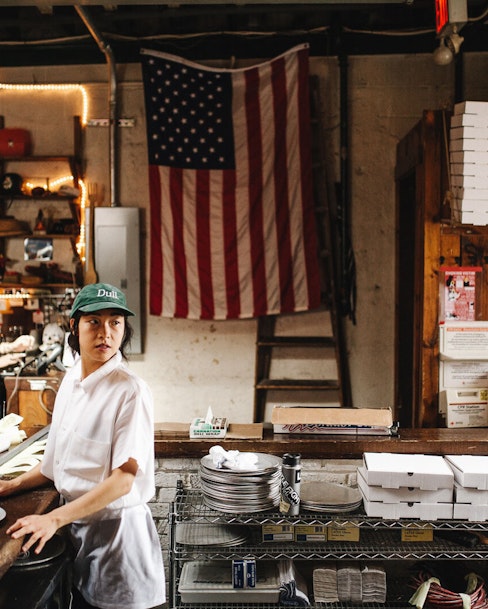
Many successful restaurants use music to connect with their customers, and we’ve found four shining examples in New York City, a food and cultural mecca that’s often referred to as the capital of the world.
From trying to make patrons feel at home in a big, complicated city to reflecting the masterful blending of disparate food traditions, the restaurants we’ve profiled have a fascinating relationship with music. They illustrate how individual approaches to playing music can be as complex and diverse as New York City’s restaurant scene itself. Let’s dive in:
Posted on February 19, 2022
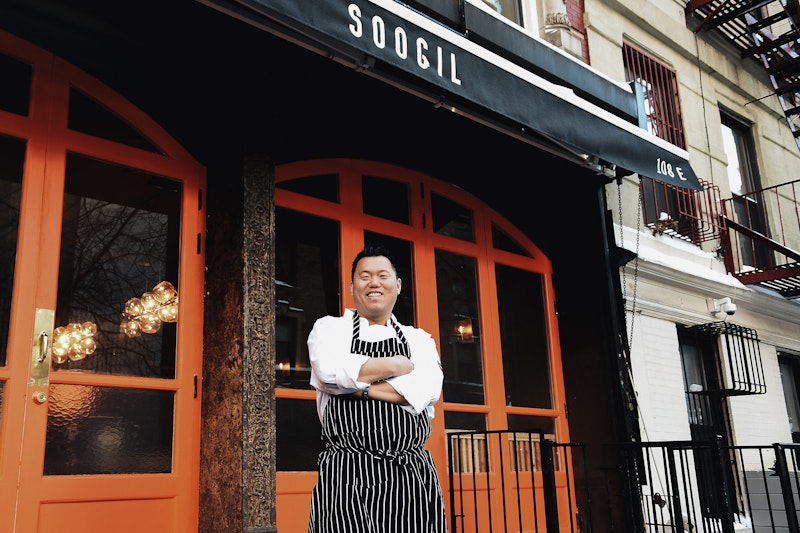
Soogil – Korean/French
Loving: Erykah Badu, BadBadNotGood, 2 Chainz
Founded earlier this year by South Korea native Soogil Lim, the recently established restaurant sharing Lim’s first name was ushered into New York City’s culinary scene with a glowing feature in the New York Times. In college, Lim ditched his biology major and began studying at the Culinary Institute of America. After training at the iconic NYC French restaurant DANIEL, Lim accepted an Executive Chef position at Korean restaurant Hanjan and ran their kitchen for four years. Now, Lim is going at it alone. Soogil’s take on Korean food is an intimate affair that heavily embraces the French culinary influences that Lim picked up training at DANIEL. With a space that seats fewer than 40, Soogil treats its guests to a sleek, modern atmosphere, adorned by Korean art and pottery. We asked manager Jeremy Seong how Soogil uses music to connect with guests:
Soogil seamlessly blends French and Korean food traditions. Is that rich and unique blend of ideas somehow reflected in your music selections?
Yes, at Soogil our menu of authentic Korean food with modern French twists appeals to a younger audience (Millennials; Generation X) and the same goes for our music selections. We play some classics, but also youthful and lively music with modern beats, tempos and vocals.
Do you see music as an important part of Soogil's unique atmosphere? If yes, why?
Yes, it is important. Chef Soogil's goal is to make people happy, which means not only great food but also a great experience. He feels that music not only enhances the restaurant's ambiance, but keeps both the guests and employees happy for overall satisfaction. Happy employees mean happy customers, which can lead to increased revenues. Also, it's important for the music to be appropriate for the atmosphere, the food and the customers. For example, we get a lot of guests on dates and people looking for a relaxed family dinner, so there are candles and an intimate atmosphere. Loud house music would distract from Chef Soogil’s creative food and guests’ expectations––it wouldn't make sense. Slower music during dinner allows servers to provide proper, more attentive service.
Does the volume and feel of your music change throughout a day? How about from season to season?
When the restaurant is less busy at the beginning of the night (6pm), we play music with a slower tempo and at a lower volume. During peak hours with a full house (generally from 7pm - 9pm, especially on weekends), we raise the volume and tempo, which also speeds up turning tables. On special occasions like Valentine's Day, we play jazz and piano music for a more romantic date-friendly mood. We are considering changing the music from season to season.
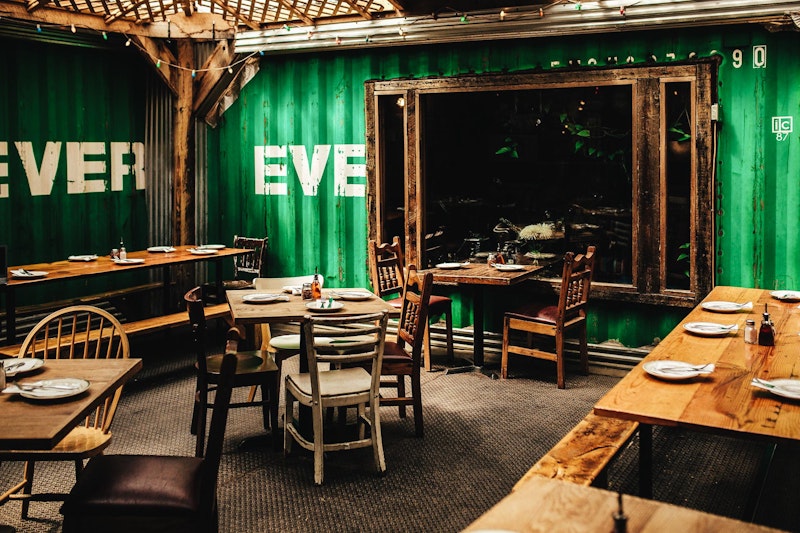
Roberta’s – Pizza
Enjoying: Indie, Early 2000’s Hip-Hop, Black Marble
More than just a can’t-miss New York City pizza destination, Roberta’s has become an international culinary sensation as evidenced by the fancy frozen pizzas you can pick up at Whole Foods under the same name. Fawning over the restaurant, a New York Times critic called Roberta’s “one of the more extraordinary restaurants in the United States.” Clearly, Roberta’s is doing something unique and compelling with their approach to making pizza, but what role does music play in their recipe for sustaining one of the world’s most beloved pizza restaurants? We spoke to Brandon Hoy, a co-owner of the restaurant.
Pizza brings people to Roberta's, but does music play any sort of role in helping your customers enjoy their experience?
Yes. It plays a huge role, as does lighting and temperature. Music sets the stage and dictates the tempo of service. The question we ask is what does this music do to the room, and what do we need from it? We use music to push the energy level. Music-play for us is used to bring the room alive. I care more about the feeling of the music rather than its content.
Though there's some exceptions, pizza is largely seen as being a fun, lighthearted food. Do your music selections reflect that in any way?
Yes, probably for the most part. We like to keep it fun and light, but sometimes the room dictates sophistication or crass humor. There are times when it is appropriate to juxtapose the lightheartedness with intense seriousness. Again feeling the room is incredibly important.
Are there any genres Roberta's is especially into at the moment?
This changes like the weather. We do like early 2000's hip-hop right now.
How important is music in helping present Roberta's unique identity to guests?
The food is the shape, the music is the color, and the lighting is the tone.
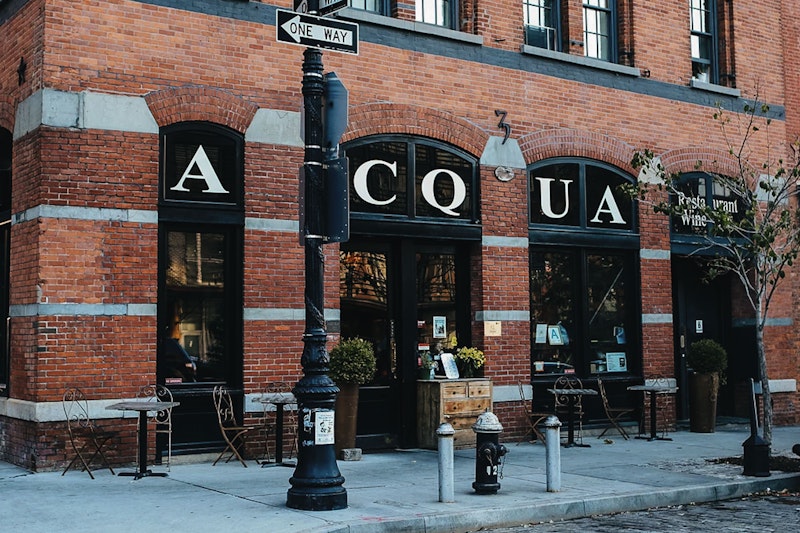
Acqua – Southern Italian Coastal
Inspired by: Lo-Fi House, Jazztronica
Owned and led by Naples native Chef Giuseppe Marrone, Acqua’s fresh and adventurous take on Italian seafood has earned the restaurant accolades from press outlets such as Buzzfeed and the Manhattan Digest. Aqcua’s food and inviting atmosphere embraces the old as well as the new by simultaneously honoring authentic Italian food traditions while incorporating a forward-thinking philosophy, and this dichotomy also seems to inform its approach to music.
Acqua takes a fresh and somewhat unconventional approach to southern Italian food. Does your relationship with music reflect the more adventurous aspects of your food philosophy?
Acqua’s cuisine focuses on raw seafood imported directly from Italy along with a number of recipes that blend traditional elements of Italian cuisine with flavors, influences and ingredients that are foreign to it. This is very much reflected by our music, which features a substantial amount of Southern Italian/Neapolitan classic artists along with more “foreign” music that span several different genres, from instrumental hip-hop to jazz to the deeper end of electronic music. This very delicate balance is achieved by marrying the musical knowledge and experience of our Chef Giuseppe Marrone and our marketing manager, Emanuele Breccia, who is also a DJ and saxophone player.
Chef Giuseppe Marrone was born and raised in Naples and Aqua's unique identity is deeply intertwined with the Mediterranean region. Do your music taste draw any parallels to that region of the world?
Giuseppe grew up being heavily influenced by legendary Neapolitan “cantautori” (singers/songwriters) like Renato Carosone, Eduardo De Crescenzo and Pino Daniele, whose songs were the soundtrack to his childhood. As he grew older, he complimented his “classic” side with heavier experimental electronic and techno music that is so prominent in Naples, being exposed to artists such as Marco Carola, Joseph Capriati and Luigi Madonna.
What, if any, role does music play in helping to create Acqua's unique mood and atmosphere?
Acqua’s music is based on specific moments throughout the day and at special events to set a unique mood and drive the appropriate energy for that time. For example, special events, wine pairing and theme nights usually call for Italian music to instantly transport our customers to Mergellina in Naples, or to re-create the vibe of an Italian coastal “piazza” (square). On a weekend night, the vibe is carefully scheduled with peaks and troughs, just like a DJ set, that matches specific moments, like aperitivo time, different dining cycles and the nightcap “ending.”
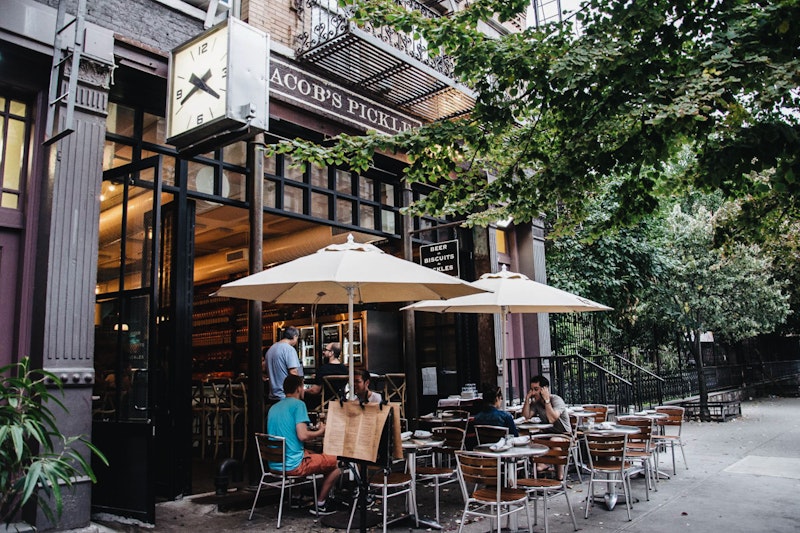
Jacob’s Pickles – Southern Comfort Food
Our favorite music: The Lumineers, The Alabama Shakes, David Bowie
Located in Manhattan's Upper West Side, Jacob’s Pickles aims to make customers feel at home smack dab in the middle of one of the largest and most complicated cities on earth. Like most households, the restaurant, which has earned a solid reputation for its southern comfort food offerings, accomplishes this lofty task through its warm atmosphere and thoughtful music choice. General manager Anastasia Trinh explains how Jacob’s Pickles uses music to connect with its guests.
Community is a huge priority for your restaurant. Do you see your approach to music as a way to help foster a sense of community within Jacob's Pickles?
Music is essential to building community at Jacob's Pickles. It helps create a lively and familial atmosphere that complements our menu. You'll frequently see both staff and guests alike dancing or mouthing the words to a song. It can help bring our relationship to our guests closer when we know we share similar tastes in music. When there is such a convivial atmosphere, it's common to see complete strangers at adjacent tables sharing food, which is a huge part of our ethos of "breaking bread.”
The idea of home seems to be an important theme for JP. How does the music you play help your guests feel at home? This seems especially challenging because you're located right in the middle of one of the world's busiest cities.
We want our guest to feel at home and music plays such an important role in developing that feeling. Our tunes can be eclectic but they all strike a chord of nostalgia or are something fun and recognizable for everyone to enjoy. New York City can be so hectic, the minute guests enter our home they can hear music that transports them somewhere vibrant and casual. We carefully cater our playlists to the different times of day and the seasons of the year to make sure our music matches the guests’ mood and the ambiance of the restaurant.
How does JP's approach to music change within a day from shift to shift? How about from season to season?
There is no magic formula. A lot of it is knowing our guests and reading the room. We generally shift gears between slower times and peak dining times to set the mood for our guests. As the seasons change, warmer months call for reggae and cooler months invite some late night Sinatra. We try not to limit ourselves and make sure everyone is having a good time!
Redefine your music streaming
See how Soundtrack works for you and your restaurant. Get our most exclusive features with a no obligation 14 day trial, unlocking everything available in Soundtrack Unlimited.
Related articles

Enterprise Music RFP: Choosing a Commercial Music Service

Apple Music for Business is Gone (Use This Alternative)

Bar and Restaurant Revenue Statistics, Trends, and Predictions

15 Ways to Increase Restaurant Sales and Customer Retention

What Is a Public Performance License? Everything You Need to Know

5 Music Apps for Bars and Restaurants